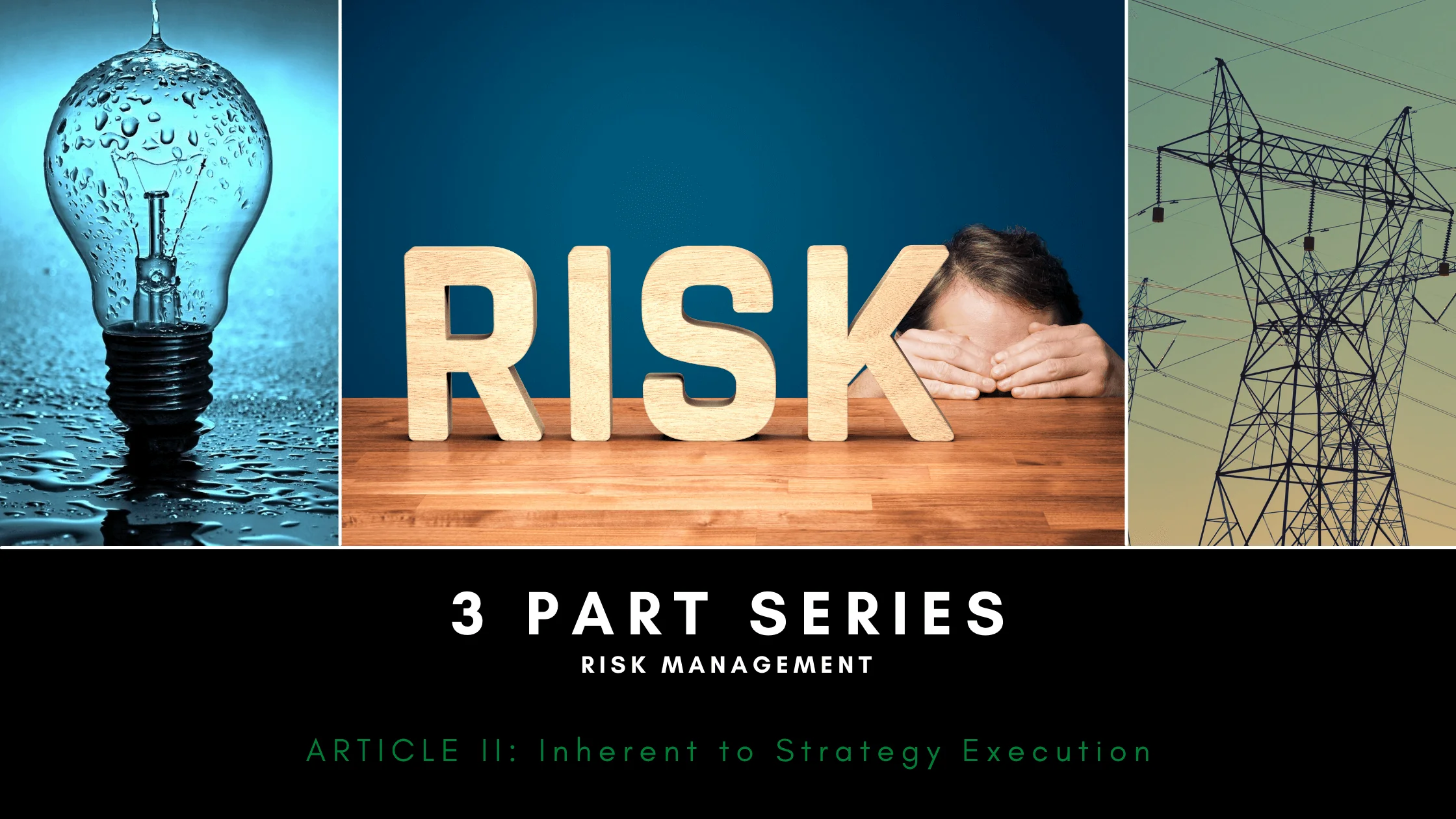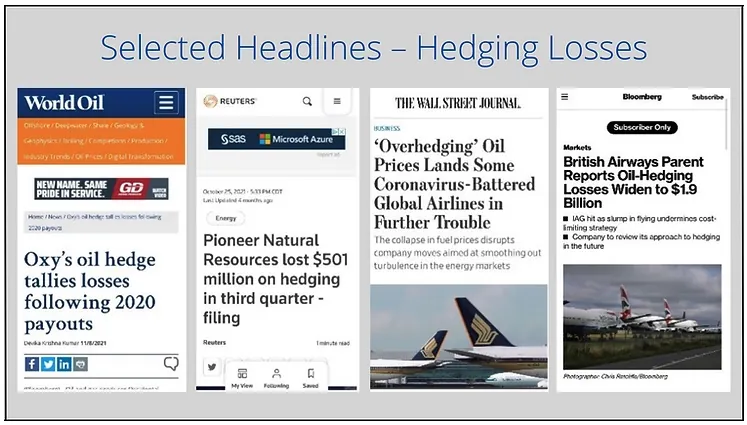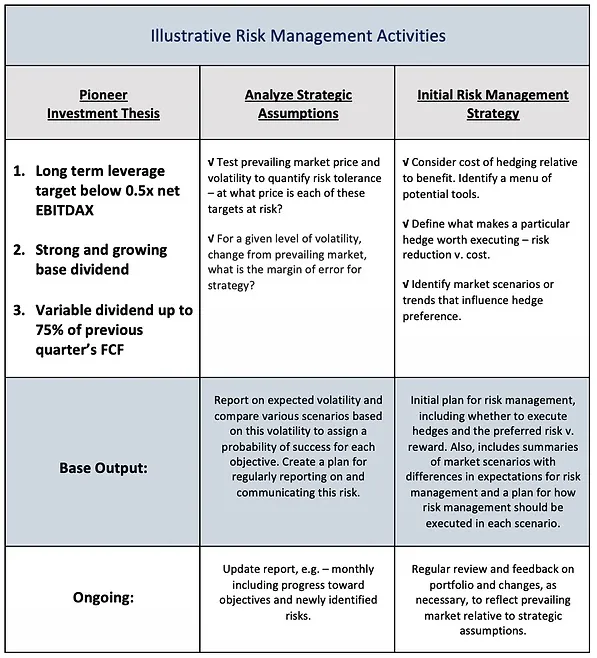Full disclosure: I have a gripe with the types of media analyses (mentioned in the first article – Energy Risk Management – How Do You Want To Be Judged?) calling out risk managers who sustain large hedging losses. They always seem to cherry pick those hit heaviest. Recent articles have picked-on public E&P companies who saw the prompt contract for WTI rise from around $50 this time last year to $80 before the end of the companies’ budget years. The same media outlets targeted airlines and other major consumers when prices were hitting new lows in April and May of 2020.
You can’t win if you let outside parties frame the issue. Risk management is a principal activity of strategy execution, including the decision of whether to hedge.
The general risk management process can be boiled down to a series of tasks.
- Identify the assumptions on which your strategy is based. Pioneer (as referenced above), for example, used forward strip pricing in its assumptions.
- Measure the potential impact of changes to those assumptions. What is the normal expected volatility on a monthly, quarterly, and annual basis of the price assumption used in planning purposes? Even under normal circumstances, commodity prices are assumed to change by +/-35% over a full calendar year.
- Assess the cost of minimizing the impact of this volatility relative to its merits. Our clients have expressed a desire to have a regular conversation about what the market is doing compared to what we thought during the planning session and to execute a simple cost/benefit analysis of hedges each time, taking into account their internal risk tolerance.
- Take appropriate actions to minimize risks that should/can be hedged. Ultimately, one has to decide: does it make sense to execute a hedge today? Why/why not? What are we watching for that could change that decision? Monitor the variables you have chosen not to hedge, and form a plan that determines when action(s) should be taken.
- Optimize the portfolio on an ongoing basis, repeating 1-5 as necessary, based on how the real world materializes compared to your strategic assumptions. It is not uncommon to have to change course mid-quarter.
We work with producers and consumers alike and find that the process works, if you take control of what you can control. In other words, risk serves strategy. It is the risk manager’s responsibility to ask, “what if?” and “how much?” This was the crux of our last article (Energy Risk Management – How Do You Want To Be Judged?). You aren’t trying to predict the cause of unforeseen volatility. You aren’t trying to be contrarian per se but trying to understand the consequences of being wrong and measuring the cost to reduce the ensuing pain. We can use the same Pioneer investor presentation referenced in our last note to demonstrate our framework, as follows:
Notice that the framework focuses on an evidence-based process for decision making. It doesn’t assume that executing a derivative hedge is the right answer. The tools in the box are much more inclusive than that, including the possibility of doing nothing. The point is to identify risk, define success, and then commit to those activities that reduce risk and improve the probability of success based on the information the market gives us. Take what the defense gives you, so to speak.
We created this simplified version based on the three objectives in Pioneer’s public investor presentation, intending to show that risk management is another key activity to executing your strategy. Unfortunately, we find that few companies put sufficient thought into risk as a component of strategy and end up making headlines as included above. As we approach the end of the first quarter, how have your assumptions changed? We’d love to have a discussion with you about the risk in the market today and how our framework can help you navigate the volatility of 2022.
Meet the Author!
Steve Sinos, Blue Lacy Advisors, LLC
Email: Sinos@bluelacyllc.com
Phone: +1-832-413-3124
Website: www.bluelacyllc.com
Steve has spent his career in strategy, risk, trading, and investment. He works with investors to source investments in opportunistic or high growth sectors, with particular interest in early-stage companies solving clearly defined problems.
He is currently a Managing Partner with Blue Lacy Advisors LLC, giving management teams and investors confidence in their decision making by supporting strategic planning and execution, risk management, commodity trading, and market analysis.
HedgeStar Media Contact:
Megan Roth, Marketing Manager
Office: 952-746-6056
Email: mroth@hedgestar.com
What’s next? Keep your eye out for…




